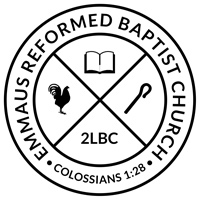Jul 12
2
Doctrinal Standard #27 (2 of 2 weeks)
- Q. How was Christ humiliated?
- A. Christ was humiliated: by being born as a man and born into a poor family; by being made subject to the law and suffering the miseries of this life, the anger of God, and the curse of death on the cross; and by being buried and remaining under the power of death for a time.
Memory Verses
- “I have been crucified with Christ. It is no longer I who live, but Christ who lives in me. And the life I now live in the flesh I live by faith in the Son of God, who loved me and gave himself for me” (Galatians 2:20, ESV).
Scripture
- Study Passage: Matthew 26:1-27:56; Mark 14:1-15:41; Luke 22:39-23:49; John 18:1-19:37
- Support Passages: Psalm 16:10, 68:18; Acts 2:22-28, 4:23-28, 13:32-37; Ephesians 4:9; I Peter 3:18-19
- Bible Story: Same as the study passages
Thoughts
- This doctrinal standard does a great job explaining how Christ humiliated himself for the sake of redeeming his people. While there is great truth to this doctrinal standard, we must be careful to understanding that when Christ became man he did not cease being God. C.I. Williamson in his book, The Westminster Shorter Catechism does a great job explaining the importance of this truth and how there has a lot of false teaching in this area throughout church history. Williamson explains that, “it is necessary to make it quite clear, however, that when Jesus did this (become man), He did not in doing it cease to be God. He did not in His state of humiliation, cease to be ‘the same in substance’ and equal ‘in power and glory’ with respect to the Father and the Holy Spirit. Some have seriously erred in teaching this wrong view. This teaching is called the kenosis doctrine. The Greek word kenosis is found in Philippians 2:7, and is sometimes translated as ‘emptied.’ Those who prefer this translation sometimes say that Jesus emptied Himself of His divine attributes. They say He left his divine nature, as it were, or at least his divine powers, when He became man. We could well say that, according to this false view, Christ’s humiliation meant the subtraction of his deity.”
- Williamson provides a few reasons for why this belief is false. “But the true view is that Christ’s humiliation consisted – not in the fact that His divine nature, or attributes, were subtracted from Him – but in fact that a true human nature was added to Him. There are a number of reasons why this false kenosis doctrine must be rejected. (1) It must be rejected because it would suggest the idea that Christ’s divine nature was changeable. But God is unchangeable. (2) It must be rejected because the scripture clearly teaches that Jesus was God even in his estate of humiliation. ‘That holy thing which shall be born of thee shall be called the son of God.’ Said the angel (Luke 1:35). (3) It must be rejected because it does not solve the ‘mystery’ of the incarnation. We cannot fully understand the astounding fact that the second person of the Godhead, without any diminution of his divine attributes, became a real man. But this subtraction theory does not help explain the mystery. It only makes it more unintelligible.”
- It is important to note that, “while our Lord’s humiliation did not involve any subtraction of deity, it did involve what we may perhaps call a ‘veiling’ of his deity, for a time. It is quite evident, from the Bible, that many people who saw Jesus did not – from that fact alone – realize that he was God. Neither did Jesus manifest His divine power and glory until He entered upon his public and official work as the Messiah.” [1]
Discussion Questions
- When Jesus became a man were things added or taken away from his nature and attribute? Explain.
- How do you know that nothing in Jesus’ nature or attributes were taken away when he became a man?
- If Jesus is fully God, why didn’t people recognize him as so here on earth?
- In the memorize verse Paul writes, “I have been crucified with Christ.” What does this mean?
- How do we partake and benefit of Christ’s humiliation?
[1] Williamson, C.I. (2003). The Westminster Shorter Catechism – 2nd Edition. Phillipsburg, New Jersey, USA; P&R Publishing Company.

